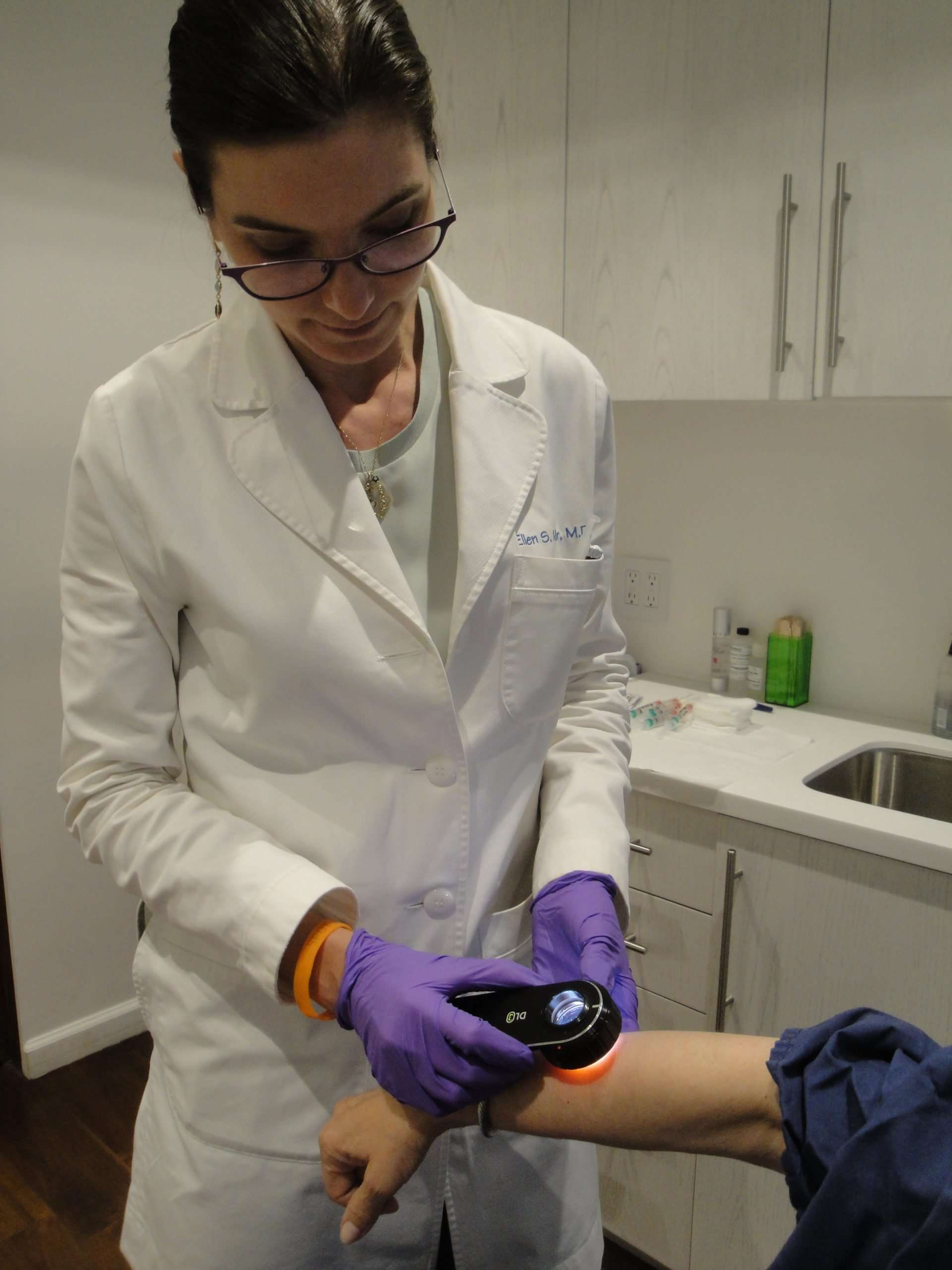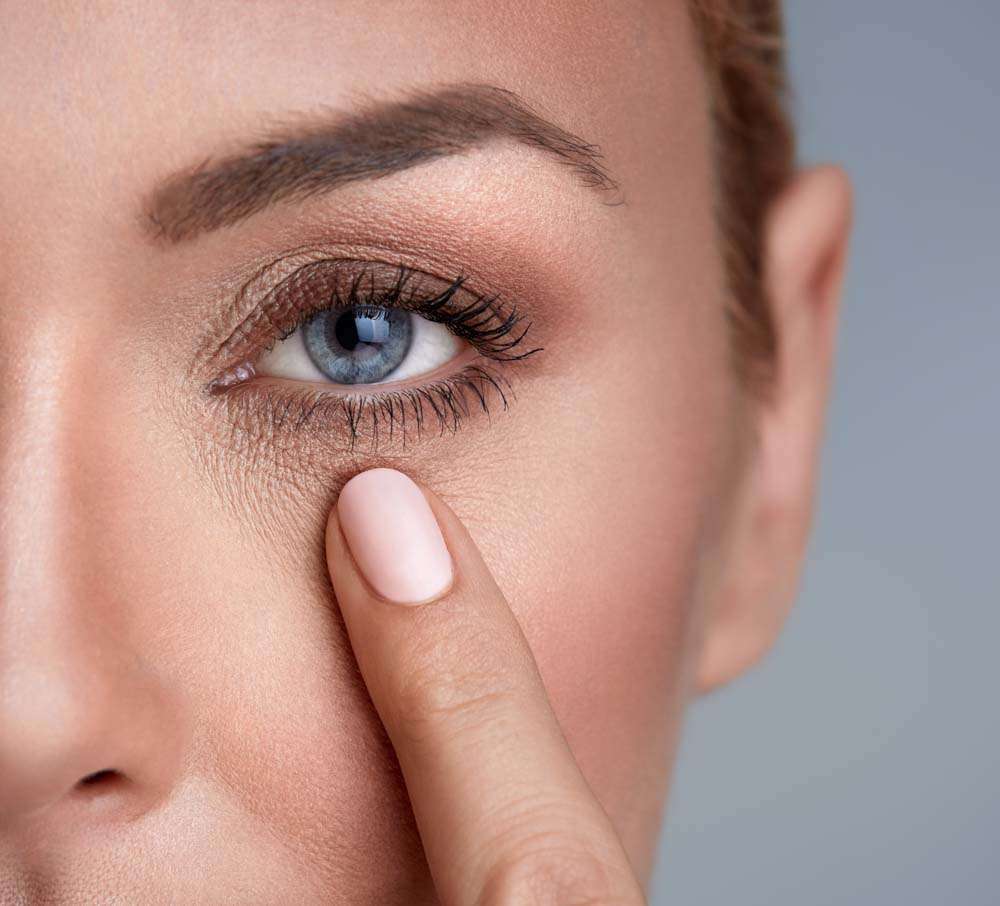Causes And Risk Factors
Researchers do not know why certain cells become cancerous. However, they have identified some risk factors for skin cancer.
The most important risk factor for melanoma is exposure to UV rays. These damage the skin cellsâ DNA, which controls how the cells grow, divide, and stay alive.
Most UV rays come from sunlight, but they also come from tanning beds.
Some other risk factors for skin cancer include:
- A lot of moles: A person with more than 100 moles is more likely to develop melanoma.
- Fair skin, light hair, and freckles: The risk of developing melanoma is higher among people with fair skin. Those who burn easily have an increased risk.
- Family history:Around 10% of people with the condition have a family history of it.
- Personal history: Melanoma is likelier to form in a person who has already had it. People who have had basal cell or squamous cell cancers also have an increased risk of developing melanoma.
The best way to reduce the risk of skin cancer is to limit oneâs exposure to UV rays. A person can do this by using sunscreen, seeking shade, and covering up when outdoors.
People should also avoid tanning beds and sunlamps to reduce their risk of skin cancer.
It can be easy to mistake benign growths for skin cancer.
The following skin conditions have similar symptoms to skin cancer:
Actinic Keratosis Signs And Symptoms
Many people have actinic keratosis , also called solar keratosis, on their skin. It shows that youâve had enough sun to develop skin cancer, and it is considered a precursor of cancer, or a precancerous condition.
Usually AK shows up on the parts of your body that have received the most lifetime sun exposure, like the face, ears, scalp, neck, backs of the hands, forearms, shoulders and lips.
Some of the same treatments used for nonmelanoma skin cancers are used for AK to ensure it does not develop into a cancerous lesion.
Appearance
This abnormality develops slowly. The lesions are usually small, about an eighth of an inch to a quarter of an inch in size. You may see a few at a time. They can disappear and later return.
- AK is a scaly or crusty bump on the skinâs surface and is usually dry and rough. It can be flat. An actinic keratosis is often noticed more by touch than sight.
- It may be the same color as your skin, or it may be light, dark, tan, pink, red or a combination of colors.
- It can itch or produce a prickling or tender sensation.
- These skin abnormalities can become inflamed and be encircled with redness. Rarely, they bleed.
Can Skin Cancer Show Up Overnight
Ask U.S. doctors your own question and get educational, text answers â it’s anonymous and free!
Ask U.S. doctors your own question and get educational, text answers â it’s anonymous and free!
HealthTap doctors are based in the U.S., board certified, and available by text or video.
Recommended Reading: Osteomyoma
What Are The Signs And Symptoms Of Melanoma
Melanoma is a skin cancer that can show up on the skin in many ways. It can look like a:
-
Changing mole
-
Spot that looks like a new mole, freckle, or age spot, but it looks different from the others on your skin
-
Spot that has a jagged border, more than one color, and is growing
-
Dome-shaped growth that feels firm and may look like a sore, which may bleed
-
Dark-brown or black vertical line beneath a fingernail or toenail
-
Band of darker skin around a fingernail or toenail
-
Slowly growing patch of thick skin that looks like a scar
Early melanoma
This early melanoma could be mistaken for a mole, so its important to look carefully at the spots on your skin.
Getting The Best Treatment

The good news is, weve taken the stress out of seeing a dermatologist. You dont have to look far for excellent dermatology services. Best of all, theres no waiting.
In many parts of New York and throughout the country, patients often wait weeks before they can see a board-certified dermatologist and receive a diagnosis, much less actual treatment.
Thats no longer necessary.
At Walk-in Dermatology, patients can see a board-certified dermatologist seven days a week. Our dermatologists will evaluate your skin and answer all your questions. We will work with you to set up a treatment plan to address your skin condition and get at the root of your issue all convenient to your schedule.
No more waiting days or even weeks to see a dermatologist. Walk-in Dermatology is here for you. We are open and ready to help you regain healthy skin that positively glows with a youthful look.
You May Like: Metastatic Basal Cell Carcinoma Survival Rate
Can Skin Cancer Pop Like A Pimple
Basal cell carcinoma is the type of skin cancer that most commonly may look like a pimple. The visible parts of basal cell carcinoma lesions are often small, red bumps that may bleed or ooze if picked at. This may look similar to a pimple. However, after its popped, a skin cancer will return in the same spot.
Can You Have Melanoma For 3 Years And Not Know
How long can you have melanoma and not know it? It depends on the type of melanoma. For example, nodular melanoma grows rapidly over a matter of weeks, while a radial melanoma can slowly spread over the span of a decade. Like a cavity, a melanoma may grow for years before producing any significant symptoms.
Read Also: Does Amelanotic Melanoma Blanch When Pressed
Complementary And Alternative Treatments
It’s common for people with cancer to seek out complementary or alternative treatments. When used alongside your conventional cancer treatment, some of these therapies can make you feel better and improve your quality of life. Others may not be so helpful and in some cases may be harmful. It is important to tell all your healthcare professionals about any complementary medicines you are taking. Never stop taking your conventional treatment without consulting your doctor first.All treatments can have side effects. These days, new treatments are available that can help to make many side effects much less severe than they were in the past.
When To See A Doctor
Moles that appear in adulthood should always be checked by a doctor. Its recommended that people have a skin check by a dermatologist yearly. If youre at risk for melanoma, your doctor may recommend a skin check every six months.
If youre concerned about your mole and dont already have a dermatologist, you can view doctors in your area through the Healthline FindCare tool.
If you have a mole that changes, especially one that meets one or more of the criteria in the ABCDE guide above, see a doctor right away.
The good news is that early detection of melanoma leads to significant survival benefits. The 10-year survival rate for melanoma that is detected early is
Recommended Reading: Squamous Cell Carcinoma Skin Metastasis
Can Skin Cancer Appear Overnight
Ask U.S. doctors your own question and get educational, text answers â it’s anonymous and free!
Ask U.S. doctors your own question and get educational, text answers â it’s anonymous and free!
HealthTap doctors are based in the U.S., board certified, and available by text or video.
Everyone Is At Risk For Skin Cancer How Much Do You Know About Skin Cancer
Basal cell carcinoma and squamous cell carcinoma
-
These are the most common forms of skin cancer, and are collectively referred to as non-melanoma skin cancers.
-
These arise within the top layer of the skin and can appear on any sun-exposed area of the body, but are most frequently found on the face, ears, bald scalp, and neck.
-
Basal cell carcinoma frequently appears as a pearly bump, whereas squamous cell carcinoma often looks like a rough, red, scaly area, or an ulcerated bump that bleeds.
-
Although non-melanoma skin cancer spreads slowly, if left untreated, it can lead to disfigurement.
-
Researchers estimate that 5.4 million cases of non-melanoma skin cancer, including basal cell carcinoma and squamous cell carcinoma, were diagnosed in 3.3 million people in the United States in 2012.
-
See a board-certified dermatologist if you spot anything changing, itching, or bleeding on your skin.
-
When caught early and treated properly, skin cancer is highly curable.
Melanoma
To help you spot skin cancer early, when its most treatable, the American Academy of Dermatology recommends that everyone learn the ABCDEs of melanoma:
Read Also: What Is The Most Aggressive Skin Cancer
You Can Find Skin Cancer On Your Body
The best way to find skin cancer is to examine yourself. When checking, you want to look at the spots on your skin. And you want to check everywhere from your scalp to the spaces between your toes and the bottoms of your feet.
If possible, having a partner can be helpful. Your partner can examine hard-to-see areas like your scalp and back.
Getting in the habit of checking your skin will help you notice changes. Checking monthly can be beneficial. If you have had skin cancer, your dermatologist can tell you how often you should check your skin.
People of all ages get skin cancer
Checking your skin can help you find skin cancer early when its highly treatable.
Squamous Cell Carcinoma Early Stages

The second most common form of cancer in the skin is squamous cell carcinoma. At first, cancer cells appear as flat patches in the skin, often with a rough, scaly, reddish, or brown surface. These abnormal cells slowly grow in sun-exposed areas. Without proper treatment, squamous cell carcinoma can become life-threatening once it has spread and damaged healthy tissue and organs.
You May Like: Does Amelanotic Melanoma Blanch When Pressed
Melanoma Can Go Away On Its Own
Melanoma on the skin can spontaneously regress, or begin to, without any treatment. Thats because the bodys immune system is able launch an assault on the disease thats strong enough to spur its retreat. Unfortunately, sometimes this happens only after the disease has spread to other parts of the body, such as the liver, lungs, bones, or brain.
The observation that the immune system can cause melanoma to regress was one of the key insights that led to the development of immunotherapy as a successful treatment for melanoma, explains Dr. Marghoob. The thinking went, if the immune system can get rid of melanoma on its own, there must also be a way to enhance the immune systems natural ability to fight melanoma. This eventually led researchers to develop drugs designed to enhance the immune systems ability to successfully fight melanoma that has spread.
How Common Is It
Overall, skin cancers are the most common cancers in the United States. But melanoma is less common than the other two major types, basal cell and squamous cell carcinoma.
Each year about 91,000 people in the U.S. are diagnosed with melanoma of the skin, according to the American Cancer Society. By comparison, about 3.3 million are diagnosed with one or more basal cell or squamous cell carcinomas.
Read Also: Does Skin Cancer Itch And Burn
The Abcdes Of Melanoma
The first five letters of the alphabet are a guide to help you recognize the warning signs of melanoma.
A is for Asymmetry. Most melanomas are asymmetrical. If you draw a line through the middle of the lesion, the two halves dont match, so it looks different from a round to oval and symmetrical common mole.
B is for Border. Melanoma borders tend to be uneven and may have scalloped or notched edges, while common moles tend to have smoother, more even borders.
C is for Color. Multiple colors are a warning sign. While benign moles are usually a single shade of brown, a melanoma may have different shades of brown, tan or black. As it grows, the colors red, white or blue may also appear.
D is for Diameter or Dark. While its ideal to detect a melanoma when it is small, its a warning sign if a lesion is the size of a pencil eraser or larger. Some experts say it is also important to look for any lesion, no matter what size, that is darker than others. Rare, amelanotic melanomas are colorless.
E is for Evolving. Any change in size, shape, color or elevation of a spot on your skin, or any new symptom in it, such as bleeding, itching or crusting, may be a warning sign of melanoma.
If you notice these warning signs, or anything NEW, CHANGING or UNUSUAL on your skin see a dermatologist promptly.
A is for Asymmetry
D is for Diameter or Dark
E is for Evolving
E is for Evolving
What You Need To Know About Early Detection
Finding melanoma at an early stage is crucial early detection can vastly increase your chances for cure.
Look for anything new,changing or unusual on both sun-exposed and sun-protected areas of the body. Melanomas commonly appear on the legs of women, and the number one place they develop on men is the trunk. Keep in mind, though, that melanomas can arise anywhere on the skin, even in areas where the sun doesnt shine.
Most moles, brown spots and growths on the skin are harmless but not always. The ABCDEs and the Ugly Duckling sign can help you detect melanoma.
Early detection makes a difference
99%5-year survival rate for patients in the U.S. whose melanoma is detected early. The survival rate drops to 66% if the disease reaches the lymph nodes and27% if it spreads to distant organs.
Recommended Reading: Etiology Of Basal Cell Carcinoma
The Early Stages Of Skin Cancer
Some forms of cancer, especially melanoma, may appear suddenly and without warning. Most people become alarmed only when they develop a crust or sore that refuses to heal. Did you know that the early stages of cancer do not always look or feel so bad? Harmless-looking moles, skin lesions, or unusual skin growths may also be the signs of early stages.
Regular skin examination can help you spot these early clues. If you see anything suspicious or observe unusual appearances in your skin, we can help you get the right diagnosis and treatment immediately. Some forms of cancer in the skin can be life-threatening and spread without being given urgent attention.
What Do The Early Stages Of Skin Cancer Look Like
People can have stages of skin cancer and yet not feel ill, which makes early treatment and diagnosis a little challenging. But by being aware of the early stages of this disease, you can protect yourself and seek effective treatment right away. Do you have scaly patches, raised growths, or sores that do not heal? Dr. Jurzyk from Advanced Dermatology Center in Wolcott, CT can help you identify and treat all types of cancer of the skin, keeping you from fatal complications.
You May Like: How To Identify Basal Cell Carcinoma
Look Out For An Ugly Duckling
The Ugly Duckling is another warning sign of melanoma. This recognition strategy is based on the concept that most normal moles on your body resemble one another, while melanomas stand out like ugly ducklings in comparison. This highlights the importance of not just checking for irregularities, but also comparing any suspicious spot to surrounding moles to determine whether it looks different from its neighbors. These ugly duckling lesions or outlier lesions can be larger, smaller, lighter or darker, compared to surrounding moles. Also, isolated lesions without any surrounding moles for comparison are considered ugly ducklings.
Basal Cell Carcinoma Types And Symptoms

A basal cell lesion is often described as a pearly papule because it has a slight shine. These papules are elevated above the surface of the skin and are generally the same color or slightly lighter than the surrounding skin.
Different symptoms and features may develop in some cases, including:
- Telangiectasias: These small dilated blood vessels can form in areas affected by BCC. These lesions appear pink, red, or purplish.
- Discoloration: The cancerous areas on the skin can appear dark or brownish due to the presence of dead cells.
- Itchiness around the lesion
- Lesion that looks like a persistent, non-healing wound
BCC lesions can appear suddenly. They may start at a size of 1 centimeter and continue to grow in size after they initially appear, becoming more noticeable with time.
Basal cell carcinoma lesions usually appear on areas of the body that have been exposed to sunlight, especially high levels of sunlight, including the face, ears, arms, legs, back, and abdomen. BCC can also occur in areas that aren’t exposed to UV at all, such as the scalp, though this is not common.
This photo contains content that some people may find graphic or disturbing.
Don’t Miss: Soderstrom Skin Cancer Screening
Biological Therapies And Melanoma
Biological therapies are treatments using substances made naturally by the body. Some of these treatments are called immunotherapy because they help the immune system fight the cancer, or they occur naturally as part of the immune system. There are many biological therapies being researched and trialled, which in the future may help treat people with melanoma. They include monoclonal antibodies and vaccine therapy.
When Is A Mole A Problem
A mole is a benign growth of melanocytes, cells that gives skin its color. Although very few moles become cancer, abnormal or atypical moles can develop into melanoma over time. “Normal” moles can appear flat or raised or may begin flat and become raised over time. The surface is typically smooth. Moles that may have changed into skin cancer are often irregularly shaped, contain many colors, and are larger than the size of a pencil eraser. Most moles develop in youth or young adulthood. It’s unusual to acquire a mole in the adult years.
You May Like: What Happens If Basal Cell Carcinoma Is Left Untreated